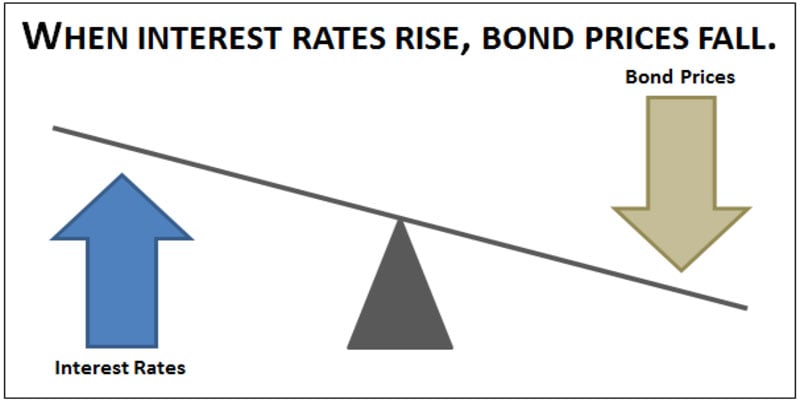Advertisement
Advertisement
The Future Value and Present Value of an Annuity
Aug 25, 2024 By Kelly Walker
An annuity's future and present value are two important financial concepts that can help you make informed decisions about your money. Understanding these terms is essential to making sound financial choices, such as investing or planning retirement. The future value of an annuity refers to the amount of money you will have at a set point in the future, while the present value of an annuity is how much it would be worth today if invested now. Knowing both values can help you plan and ensure your finances are secure for years.
What is an annuity and why it is important?
An annuity is a financial product that pays out money over some time, usually with no end date. It can be used to save for retirement or make regular payments into an investment portfolio. The payments may be made at regular intervals, such as monthly or annually. The amount received in each payment depends on the annuity terms and money invested.
An annuity's future and present value are both important considerations when making financial decisions. The future value is the estimated amount you will have at a set point, and it can help you plan for retirement or other long-term goals. The present value is how small that amount would be worth today if invested. Knowing these values can help you make the right decisions regarding investing and planning for your future.
The difference between the present value and future value of an annuity:

The present value of an annuity is the amount you would receive if you invested the money today, while the future value of an annuity is the estimated amount you will have at a set point in the future. The difference between these two values is important because it helps you understand how your investments may grow over time. For example, if the present value of an annuity is $100 and the future value is $150, then your investment will have grown in value by 50% over the period.
How to calculate the present value of an annuity?
The present value of an annuity can be calculated using the following formula: PV = R x (1 - (1 + i)-n) / I, where PV is the present value, R is the amount of each payment, i is the interest rate, and n is the number of payments. Using this formula, you can figure out how much money you would need to invest today to receive a specific amount at a set point in the future.
How to calculate the future value of an annuity?

The future value of an annuity can be calculated using the following formula: FV = R x ((1 + i)^n - 1)/I, where FV is the future value, R is the amount of each payment and i is the interest rate. Using this formula, you can estimate how much money you will have at a set point in the future based on your current investments. Understanding an annuity's present and future value is essential to making sound financial decisions. Knowing both values can help you plan ahead and ensure that your finances are secure for years to come. By understanding these concepts, you can make better decisions about investing, retirement planning, and other financial goals.
Examples of how to use present and future values when investing in an annuity:
- When investing in an annuity, you can use the present and future values to calculate how much money you need to invest today to receive a specific amount at a set point.
- You can also use an annuity's present value and future value to compare different investments and pick one with the best potential return.
- Knowing both values can help you plan for retirement and long-term goals, such as buying a home or starting a business.
Tips for choosing the right type of annuity for your needs
Consider the type of annuity you are investing in, as several different types are available.
Research the fees associated with each annuity type to ensure you get the best return on your investment.
Evaluate an annuity's interest rate and term length before making a decision.
Talk to a financial advisor before investing in an annuity, as they can provide guidance on which type is best for your needs.
Remember to factor in taxes when evaluating an annuity's present and future values.
Conclusion
An annuity's future and present value are essential financial concepts that can help you make smart decisions about your investments. Knowing both values can help you plan for retirement or other long-term goals, compare different investments, and understand how taxes affect the return on your investment. With the right knowledge and guidance, understanding an annuity's present value and future value can help you make informed decisions about your finances.
FAQs
Q: What is the future value of an annuity?
A: The future value of an annuity refers to the amount of money you will have at a set point in the future if investments are made today. You can calculate this amount using the formula FV = R x ((1 + i)^n - 1)/I, where FV is the future value, R is the amount of each payment and i is the interest rate.
Q: What is the present value of an annuity?
A: The present value of an annuity refers to how much money it would be worth today if invested now. You can calculate this amount using the formula PV = R x ((1 - (1+i)^-n)/i), where PV is the present value, R is the amount of each payment, i is the interest rate, and n is the number of payments.
Q: How do I know which type of annuity to invest in?
A: It is important to consider the type of annuity you are investing in, as several different types are available. Research the fees associated with each annuity type to ensure you get the best return on your investment. Evaluate an annuity's interest rate and term length before deciding, and remember to factor in taxes. Lastly, it is always a good idea to talk to a financial advisor before investing in an annuity to get expert guidance on the best type for your needs.
Q: How can I use the present value and future value of an annuity?
A: Knowing both values can help you plan for retirement and long-term goals, such as buying a home or starting a business. You can also use an annuity's present value and future value to compare different investments and pick one with the best potential return. Additionally, you can calculate how much money you will need to invest today in order to receive a specific amount at a set point in the future.
Q: What other factors should I consider when investing in an annuity?
A: In addition to researching the fees associated with each type of annuity, evaluating the interest rate and term length, and factoring in taxes, you should also be sure to think about your individual financial goals when making a decision. Consider the purpose of your investment, when you will need access to the money, and any other relevant factors before investing in an annuity.
On this page
What is an annuity and why it is important? The difference between the present value and future value of an annuity: How to calculate the present value of an annuity? How to calculate the future value of an annuity? Examples of how to use present and future values when investing in an annuity: Tips for choosing the right type of annuity for your needs Consider the type of annuity you are investing in, as several different types are available. Research the fees associated with each annuity type to ensure you get the best return on your investment. Evaluate an annuity's interest rate and term length before making a decision. Talk to a financial advisor before investing in an annuity, as they can provide guidance on which type is best for your needs. Remember to factor in taxes when evaluating an annuity's present and future values. Conclusion FAQs Q: What is the future value of an annuity? Q: What is the present value of an annuity? Q: How do I know which type of annuity to invest in? Q: How can I use the present value and future value of an annuity? Q: What other factors should I consider when investing in an annuity?
What Are Minimum-Interest Rules?

Difference between Fixed and Variable Deposit Interest Rates

Understanding Single-Premium Life Insurance: A Comprehensive Guide

How Venture Capitalists Make Investment Choices?

Why 3x ETFs Are Riskier Than You Might Think

The Inverse Connection Between Interest Rates And Bond Prices

How to Trade Orange Juice Options

The Impact of CHIP on Children's Access to Healthcare Services



